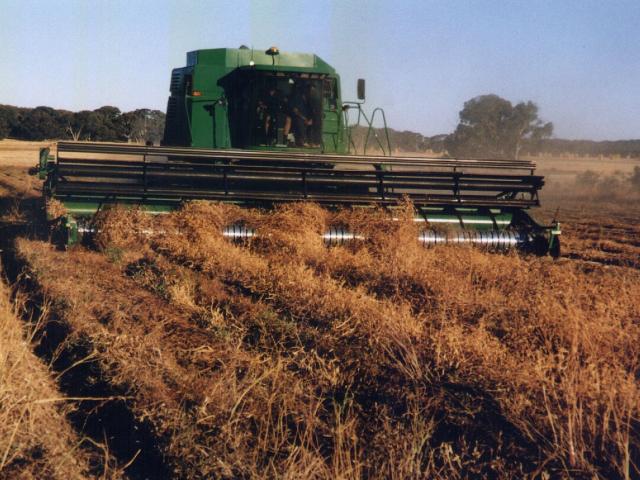Plan before harvesting
Crops that do not remain erect or which are harvested from swaths require some pre-harvest planning particularly in relation to the timing of harvesting, and the placement and width of swaths.
Examples of crops that require specific harvest plans are field peas, swathed canola and barley.
Field peas
Field pea crops must be harvested at a time when the condition of the crop facilitates the pick-up of the vine. This will be as soon as the grain is at or slightly above the maximum allowable moisture content. When at or slightly above this moisture content, the stems retain some pliability and a pick-up harvest front can lift and capture any vine that has slumped into the furrows.
If harvest is attempted after the crop has passed this stage the stems will have dried to an extent that makes them brittle. A pick-up harvester front cannot lift pea vine in this condition. The stems break when lift is attempted and a considerable loss of grain can result from crop that has slumped into the furrows.
The use of a crop desiccant can provide some operational flexibility to manage the condition of the crop at harvest.
Swathed canola and barley
Effective swathing on raised beds requires a swather that places the swath on the top of a bed. This can be arranged by adapting the swather’s opening to match the top of a bed. If a swath is not located squarely on top of a bed, some of it will fall into the furrows.
A swath that overhangs the furrows is unlikely to present a problem to lift and harvest provided it is harvested when seed moisture content is at or slightly above the limit and the straw is still a little pliable, as with peas.
If the swath placement is not wholly on top of a bed and the straw is too wet or too dry, its pick-up and threshing will be inefficient and harvest loss will be experienced.
Other options can be implemented where farmers have a large enough crop to make it worth while to invest extra time and capital. For example, one farmer in the Esperance district has configured his bed-former to build a 2.5m wide bed, in amongst beds that are 2.0m wide, specifically to carry a swath and facilitate the harvest of the swaths.

